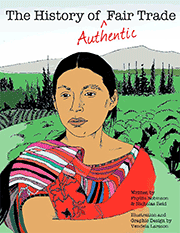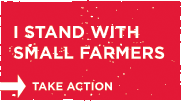… continued from the previous post.

In 1994 the organization was legally registered as a civil society association under the name “Ecological Farmers of the Sierra Madre of Chiapas” (CESMACH). Then, in 1996, they obtained their first certification of organic processes and products from the Organic Crop Improvement Association (OCIA) and, in that same year, they were able to begin selling organic coffee to the United States. Eventually, in the year 2000, Cesmach was accepted as a Fair Trade member, having complied with the criteria established for small coffee-producing cooperatives by Max Havelaar. Currently, Cesmach is organically certified in accordance with the National Organic Program (NOP) of the U.S. Department of Agriculture and following the guidelines established by the European Union. It also has Fair Trade certification with FLO International.
1999 was an important year for Cesmach because the organization carried out both internal and external development via a process of priority analysis which helped the group identify strategies that would allow for the cooperative to continue on and to grow in the region, by paying closer attention to urgent needs and by searching for alliances and allies that share the organization’s objectives and needs. Cesmach analyzed basic elements such as access to financing, integrated product quality improvement, increase in the number of producer members in order to create an economic, social and environmental impact, internal capitalization, acquisition of infrastructure and equipment, etc.
|
|
|
Cesmach’s offices and coffee storage warehouse.
The cooperative today
Today Cesmach is well-established as a true cooperative that is active and that serves as a tool for its associated small-coffee producers. It is primarily dedicated to searching for solutions and to making proposals in response to the complex set of problems faced by the small coffee producers and their communities. The following chart provides some information on the evolution of this organized group:
|
Year |
1996 |
2000 |
2008 |
|
Number of members |
18 |
145 |
365 |
|
Hectares of organic coffee |
120 |
450 |
1320 |
|
Exports (in 69-kilo sacks) |
250 |
3,000 |
7,000 |
|
Number of communities |
3 |
12 |
17 |
|
Municipalities involved |
1 |
3 |
4 |
|
Product certifications
|
Organic
|
Organic Fair Trade |
Organic Fair Trade |
In 2006, CESMACH went through a second internal analysis and strategic planning process, designed to update the co-operatives’ objectives and goals in the framework of a new market reality and changes in the organization to include greater participation from the producer-members, the communities, former leadership from committee members, and the employees.
|
|
Sustainable coffee farm
Currently Cesmach is organized into operational departments (production, commercialization, administration and accounting, commercialization and community development). The important activities of this social business are grouped into programs that are described below.
|
|
Collecting pergamino coffee in the farmers’ warehouse.
Sustainable coffee program
The goal of this program is to systematize and carry out production activities, to oversee investment, and to improve the processing and marketing of the organization’s coffee while maintaining ecological standards and a highly-responsible social ethic. A component that was incorporated in 2005 was conservation of the biodiversity, going beyond the farms and looking at that which has the greatest impact on conservation: El Triunfo Biosphere Reserve’s flora and fauna. The result is a coffee that has a tremendous impact on its communities of origin with regards to social, economic, and natural resources.
|
|
A visit from Equal Exchange, one of our primary allies in promoting sustainable coffee.
















